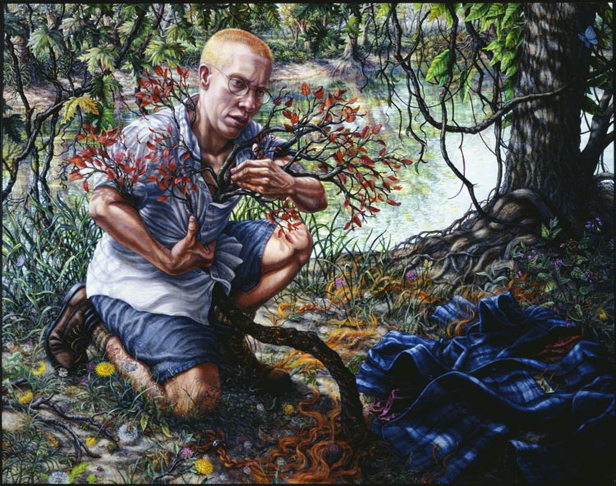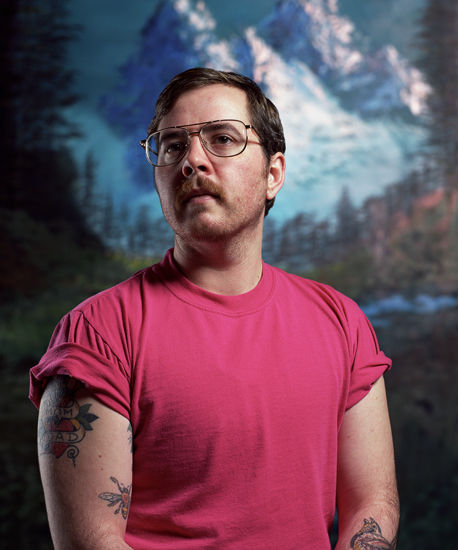September 3, 2014 - 18:28

I. coursekeeping
relocate yourself: don't get too comfortable!
and/but: we now all know one another's names?
about the trans-on-campus convo...
I was on the 2007 trans task force, and I am committed to a more inclusive admission policy.
One of the sources of the open letter sent to administrators last week
is (earlier versions of) this class/other gender studies courses I've done;
the language on the petition about the historical mission of the college--
to offer education to those denied access because of gender--comes from here.
You'll see that this issue is also already built into the center of this year's syllabus--
we will get back to it/we are working up to it by talking today about Eli Clare's story.
smolina invited us to think about "micro-" and "macro-"contact zones:
questioning the systems set up to give us a false sense of a voice by
being willing to actually engage...
Also built into the syllabus is a listening project--and an assignment that you
put this practice into action on campus, so (if this is an issue that matters to you),
you can get course credit for working on it; if your issues are other, you can work on them.
Serendip is also a great site for having conversations that can't be contained in class;
Hummingbird found an earlier posting on the site (and there are many) about trans issues on campus,
so feel free to use our course forum not just to answer my prompts, but to talk about these questions....
II. But first! Exile and Pride!
The name Eli's mother first chose for him is in one of his poems,
"The Stories Mama Tells," p. 56 in The Marrow's Telling:
"Elizabeth, my preemie baby...
From her I learned the words...birth accident."
As part of his transition, he re-named himself, and I had asked you
also to chose a username and avatar for him to use on Serendip...
as a way to summarize the "argument" of the story he tells.
Go 'round and share?
rebeccamec: BoneDeep (avatar: skeleton)
Sunshine: Supercrip (avatar: protestors)
ndifrank: Crip (avatar: Elk River)
smalina: maninthecage (avatar: flannel)
bridgetmartha: Spotted Logger (avatar: used bookstore)
khinchey: Supercrip(avatar: "Piss on Pity")
rb.richx: cripabled (avatar: ocean meeting mountains)
abradycole: Cyclical Motion (avatar: The Earth--but danger of personal invisibility?)
rosea: CollectedStones (avatar: stone collection)
nbarker: Naturally Queer (avatar: "Piss on Pity")
Hummingbird?
Name?
What pattern(s) can you hear/see in your postings? Any tensions/disagreements?
Here is the avatar Eli selected for his own webpage. It is part of a painting of him by Riva Lehrer:

Write/talk to a partner/large group for a coupla' minutes about what you see here--
focus especially on the two categories Eli uses to organize this book: I. Place and II. Body:
what do you see of each? how can you describe the relationship between them?
On his website, Eli describes the image as "me embracing, wrestling with a tree, taking it into me
and at the same time giving something of myself back"--i.e. very contextual and ecological.
So, too, is Riva's description of her project of Circle Stories:
"a collaborative process seeking truthful representation of their experience,
evoking the circle of the wheelchair, universal symbol of disability as a mark of physical and social difference,
and the creation of a community of disabled innovators."
Compare the series of Transportraits by Lorenzo Triburgo,
focusing again on the same two categories, Place and Body:
what do you see of each?
how can you describe the relationship between them?
What have you seen?
Triburgo's description of what he was doing:
I have created a series of unlikely heroic portraits that examine representations of American masculinity, using transgender men set against a created environment. Following the path of 19th century portrait and landscape artists such as John Singer Sargent and Alfred Jacob Miller, I simultaneously reference classic and contemporary photographic portraiture and consider the origination of American male identity.
...I created oil-painted landscapes....The backdrop sets the stage for a series of portraits focusing on a population that is rarely celebrated in a laudable manner. The photographs...draw a parallel between the (mis)perception of the 'photographic record' devoid of social construct and gender as an unchanging truth. In Transportraits I invite the viewer to question the construct of portraiture (and masculinity) while simultaneously depicting a sincere heroism.
III. I'm using these two paired images of trans "bodies" in "place,"
as "warm-up," to lead us back to Exile and Pride, and its portrait of the
relationship of the (transgendered, disabled, working class) self to his environment.
 |  |
What happens when you start identity work with place?
What does the environment have to do with identity??
Eli choses a very unusual form for a memoir: he puts the setting first, brings it into the foreground,
and then shows us what happens to the self, when gender and disability and class identity are
contextualized in this way, "when embodiment is represented as emplacement."
The book as a whole is dedicated "To the rocks and trees, hills and beeches."
What's the effect of doing that? What happens to the self, when the
issues of gender and disability and class are contextualized in this way?
Focus on "Losing Home," pp. 31f-->
p. 36: "my desire for community, for physical safety, for emotional well-being and psychological comfort compelled me to leave.
Being a queer is one piece of this loss, this exile; abuse is another. And class is a third..the most confusing...if I moved back,
I probably wouldn't find work...I left because I didn't want to be poor...My loss of home, my exile, is about class."
Eli replaces that "home" with another one, the "home" of his body":
He repeats the refrain "The body as home" five times over 3 pages (pp. 11-13):
"The body as home, but only if it is understood that bodies are never singular,
but rather haunted, strengthened, underscored by countless other bodies."
"The body as home, but only if it is understood that
place and community and culture burrow deep into our bones."
"The body as home, but only if it is understood that language too lives under the skin."
"The body as home, but only if it is understood that bodies can be stolen,
fed poison and lies, torn away from us."
"The body as home, but only if it is understood that the stolen body can be reclaimed."
What does it mean to call our bodies [rather than a place] home?
What do we need to make a home?
What multi-issue politics might make your home possible?
How might locating ourselves @ home--or away from home/in exile--
might be useful in the activist work we are doing?
